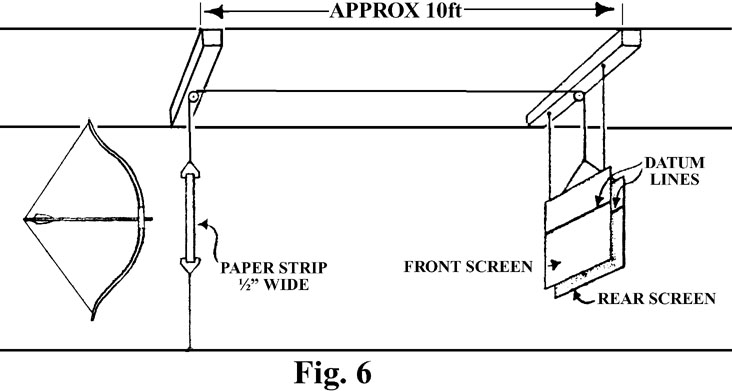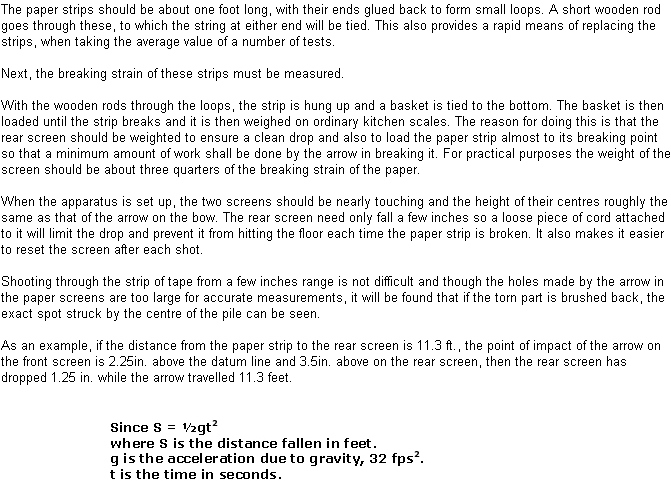BOWMAN’S HANDBOOK
Technical Notes and Gadgets for the Practical Archer
Part 1 of this book - Technical Notes on Archery – from which this article comes was written by one Lieut. Cdr. W. F. Paterson. The book is undated and has no ISBN number but may have been published under the aegis of the Grand National Archery Society of Great Britain sometime in the 1940s or 1950s. Almost all of the articles in the book appear to have been published in its journal, ‘The British Archer’.
I have scanned the text by OCR and reproduced the images by scanning into Photoshop.
Dennis La Varenne
28th July, 2004

The initial velocity of the arrow, when it leaves the bow, must be known in order to measure bow efficiency and to calculate the expected performances of an arrow.
Two methods can be used. Direct measurement of velocity or the ballistic pendulum. With the latter the arrow is shot, at short range, into a padded wooden block which is hung up by a length of light cord. The amount that the block swings when it is hit is measured and from this the kinetic energy of the arrow is known, the velocity of the arrow at the moment of impact can be worked out.
For direct measurements of velocity, electrical laboratory facilities are necessary but quite accurate results can be obtained by other means.
All that is needed is two wooden frames, about 2 ft. square, two hooks, two pulleys for which ordinary ceramic wireless aerial insulators can be used, brown paper, a roll of paper tape ˝ in. wide and a ball of strong string.
The method employed can be seen by referring to Fig. 6. Two paper screens are used, the front one being fixed and the back one arranged so that it will fall when the r inch paper strip is broken. The archer shoots through the paper strip and while his arrow is travelling toward the front screen, the one at the back will be falling. After the screens have been pierced by the arrow, the hole in the back one will appear to be higher, relative to the datum line, than that in the fixed front screen. This difference enables the speed of the arrow to be calculated.
The two screens are made by fixing sheets of brown paper across light wooden frames. The horizontal datum lines are ruled across their centres. When the apparatus is set up, it is essential that one datum line is directly in front of the other and it will be found easier if necessary adjustments are made to the front screen. To do this the two pieces of string which hold it up should be led up over their two respective hooks and then led outwards to some suitable fixture where they can be tied. If the backs of two ordinary chairs are used for this purpose, the chairs can be moved in or out to adjust the height of each side of the front screen.



= 11.3 / .08 = 141 ft. per sec.
